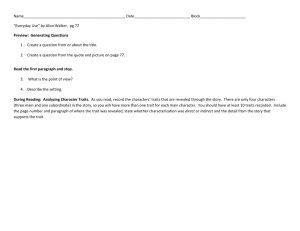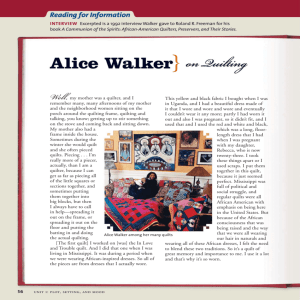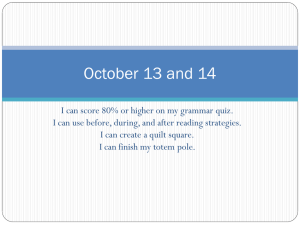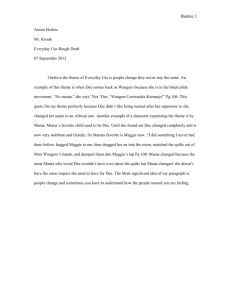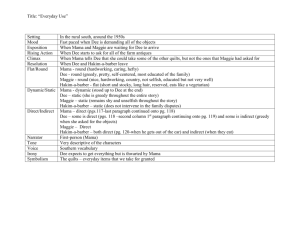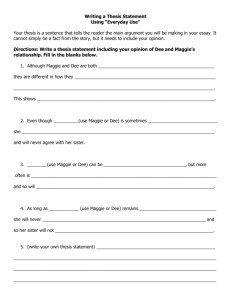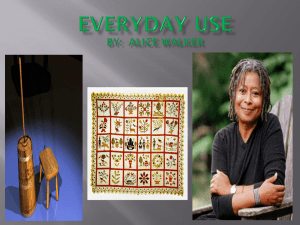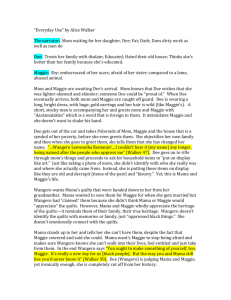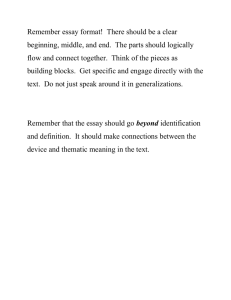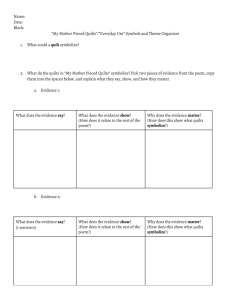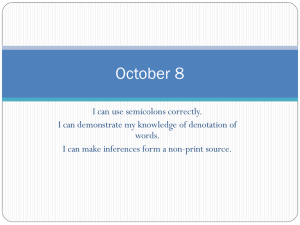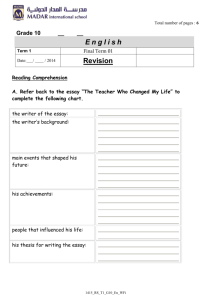Everyday Use
advertisement
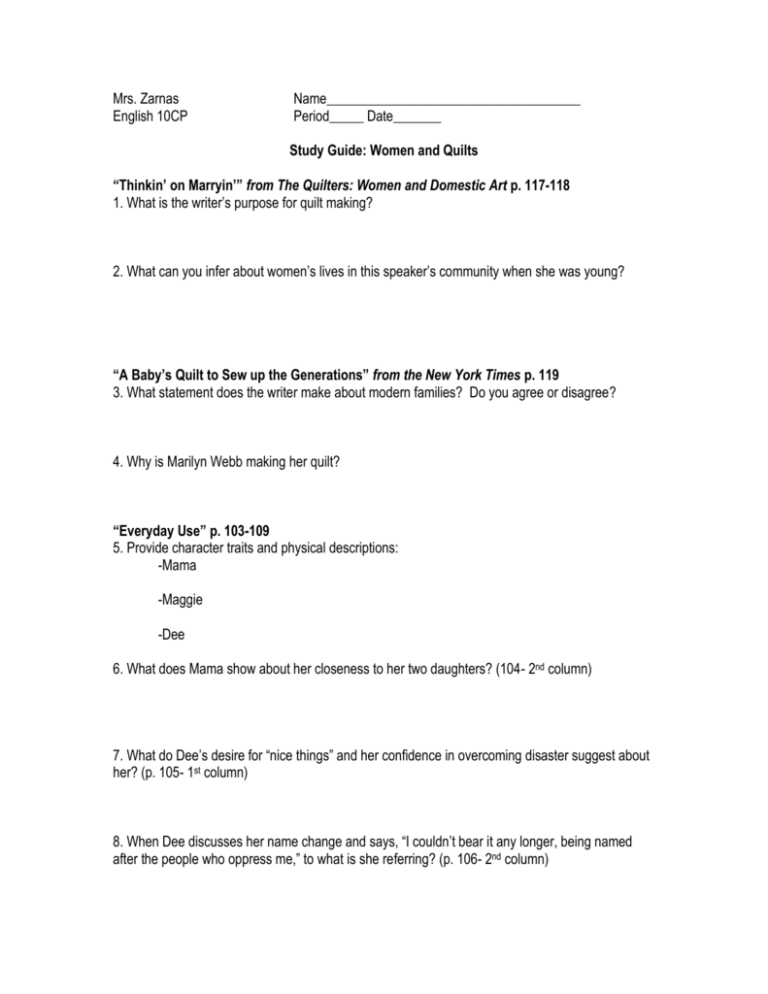
Mrs. Zarnas English 10CP Name_____________________________________ Period_____ Date_______ Study Guide: Women and Quilts “Thinkin’ on Marryin’” from The Quilters: Women and Domestic Art p. 117-118 1. What is the writer’s purpose for quilt making? 2. What can you infer about women’s lives in this speaker’s community when she was young? “A Baby’s Quilt to Sew up the Generations” from the New York Times p. 119 3. What statement does the writer make about modern families? Do you agree or disagree? 4. Why is Marilyn Webb making her quilt? “Everyday Use” p. 103-109 5. Provide character traits and physical descriptions: -Mama -Maggie -Dee 6. What does Mama show about her closeness to her two daughters? (104- 2nd column) 7. What do Dee’s desire for “nice things” and her confidence in overcoming disaster suggest about her? (p. 105- 1st column) 8. When Dee discusses her name change and says, “I couldn’t bear it any longer, being named after the people who oppress me,” to what is she referring? (p. 106- 2nd column) Notes: “Asalamalakim” (p.106): History of Black Pride: 9. Infer what Mama’s, Maggie’s and Dee’s words suggest about he value of the churn to each of them. (p. 107- 2nd column) 10. Why does Maggie slam the door when Dee asks for the quilts? (p. 108- 1st column) 11. Mama values the quilts, so why would she want them put to everyday use, which may damage them? (p. 108- 1st column) 12. How does Maggie handle the conflict with Dee over the quilts? What does Maggie’s approach to this conflict say about her? (p. 108- 2nd column) 13. What effect do you think Mama wants her actions to have on Maggie? (p. 108- 2nd column) 14. Near the end of the story, Dee accuses Mama of not understanding their African-American heritage. Do you agree or disagree with Dee? Why? 15. What character did you side with in the conflict over the quilts? Why? 16. Mama and Maggie have both changed by the end of the story. How do you know this? -Mama: -Maggie: Meet the Writer: Alice Walker p. 109 17. What similarities/connections do you find between Alice Walker’s life and the story “Everyday Use”? From Hands: For Mother’s Day p. 110 18. Who is the “we” to which the speaker in the poem belongs? 19. The speaker says that the quilters “survive on…the leftovers from a materially rich culture.” What character traits of the quilters do the speakers words emphasize? Lucinda Matlock p. 111 20. Based on her activities, what are the speaker’s character traits? 21. How is Lucinda Matlock like the women in “Everyday Use” and “Hands for Mother’s Day”? Interview with Alice Walker p. 115-116 22. What, in Walker’s opinion, are the values and benefits of practicing the art of quilting? Interview with Nikki Giovanni p. 117 23. For what is quilting a metaphor in this Giovanni’s poem? 24. Do you think quilting, as used by Giovanni, is an effective metaphor? Why or why not?
